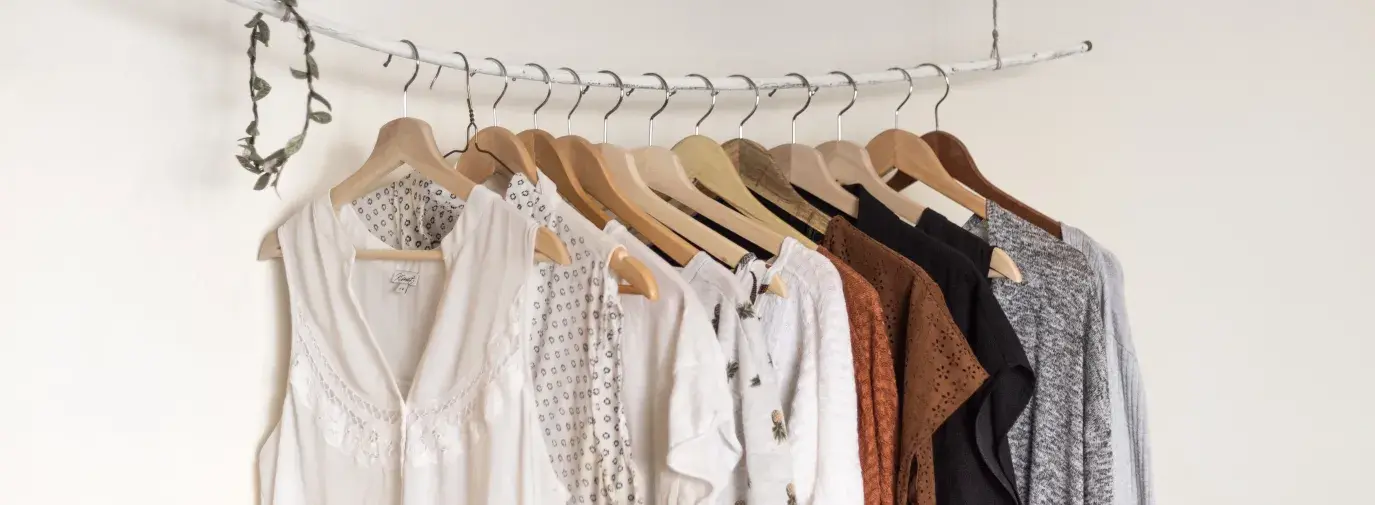
The challenges facing the fashion industry, from the labor to t environmental issues, can feel overwhelming to a consumer. While there is no way for us to shop our way into sustainability, at the end of the day, we still live in a society where pretty much all of us have to wear clothing on a daily basis. So, what’s a person to do?
1. Reduce how much clothing we purchase.
Part of the challenge that the industry is facing is the sheer volume of resources it needs to sustain consumer appetites (which in turn are fed by the marketing of clothing companies themselves). Even eco-friendly alternatives still require energy and non-renewable resources to be produced. Until the fashion industry is able to produce clothes in a circular economy – in which resources are reused, rather than end up in a landfill in varying forms – there is no way for consumers to shop our way into sustainability. No amount of sustainability initiatives or fair labor practices can counteract the resources needed to produce large volumes of clothes at increasingly faster turnaround times
We purchase so much clothing that when people recycle clothes by donating them, many of them are overwhelmed. Secondhand stores are overwhelmed by donations and can only sell 20-40% of the clothes they receive.
Clothing swaps are a great way to cycle clothes – at no cost! – amongst friends and communities. Meanwhile, companies like Rent the Runway provide consumers with the option to rent clothes for set amounts of time, allowing consumers to try new trends or get dressed for a fancy event without the need to own them. In fact, in a report by McKinley and Business of Fashion, the clothing rental market is expected to be one of the fastest growing ones over the next couple years.
2. Shop secondhand when possible.
While thrift stores and charity shops are still options for people to shop secondhand on a budget, there are new ways to shop secondhand now as well. Companies like ThredUp, an online secondhand store, and TheRealReal, an online luxury consignment store, are changing consumer perceptions of what shopping secondhand looks like.
3. If you need to buy new, try to support green businesses or products that have been certified.
Sometimes, there are certain items that you’d prefer to buy new. We get it! If possible, try to purchase a product from a green business that shares how it is socially and environmentally responsible, or purchase an item that has been certified through a sustainability certification, such as GOTS certification. You can read more about certifications here. By supporting green businesses, or even opting to buy certified clothes from a more conventional brand, you’re indicating to businesses that you’re putting your money where your values are.
Of course, some of these options do come at a premium price; if you do need to shop with a conventional company, you can look at our scorecard to see which ones are doing better than average – and then advocate for big companies to adopt more sustainability initiatives.
4. Reach out to companies and demand change
Companies really do care about what the market wants. Consumer outrage at the Rana Plaza collapse led to companies and trade unions forming the Bangladesh Accord and Bangladesh Alliance. Consumer disinterest – and even disgust – for products made from fur have led to luxury companies starting to distance themselves from items made from animal fur, and to adopt stronger animal welfare policies.
It’s important for consumers to reach out to companies and ask what they are doing to address the different environmental and social challenges in their supply chains, like water and chemical management policies; to push back on corporate language designed to make them sound more sustainable than they actually are; and to hold them accountable to goals and plans that they make. Every call you make, e-mail you send, or social media post you make increases corporate awareness of how important these issues are to consumers. If you stop shopping with a company, send them a message to let them know why, and what changes they could make for you to start shopping with them again.
And you can start right here by taking our Carter's action and telling the country's largest retailer of baby clothes that you want them to clean up their act and make their clothes safer for the workers, the planet, and the babies and children that wear their clothes.
6. Continue to educate yourself – and people in your networks!
Shifting consumer habits and perceptions is an important step to take to drive change at the company level. As you educate yourself and change your shopping habits, don't forget to pass along your resources and tips to the people in your life!
- To learn more about toxins in clothing: Check out Green America’s Toxic Textiles campaign. Our friends at Fashion FWD, a non-profit dedicated to this issue, also have great resources.
- To learn more about a company’s practices: Check out Green America’s scorecard, or visit GoodOnYou for company ratings. Don’t forget to reach out to companies directly!
- To learn more about sustainability and labor in apparel: Check out Green America’s new report, Toxic Textiles, and our green living pieces on apparel.






